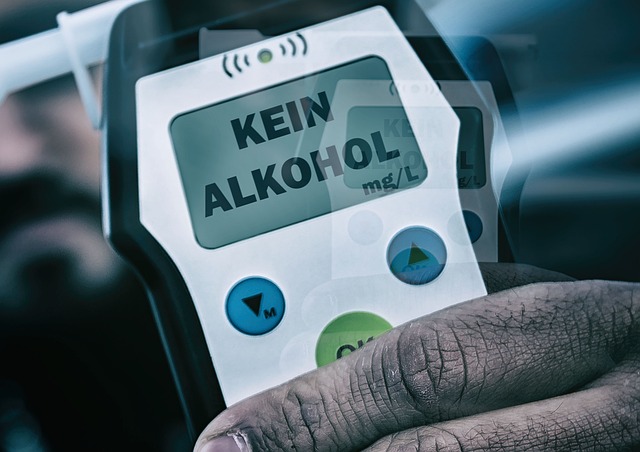Recidivism Reduction: Zero Tolerance for Drug-Impaired Driving

Drug-impaired driving laws aim to protect public safety through strict enforcement, education, and a…….
In the intricate web of criminal justice reform, recidivism reduction strategies stand as a beacon of hope, aiming to break the cycle of reoffending and foster a more just and safe society. This comprehensive article delves into the multifaceted world of these strategies, exploring their global impact, underlying mechanisms, and the transformative potential they hold. By examining various aspects, from economic implications to technological innovations, we will uncover the intricate dance between policy, practice, and societal progress. Through this journey, readers will gain insights into the critical role these strategies play in shaping a more equitable future.
Recidivism reduction strategies encompass a range of deliberate interventions designed to minimize the likelihood of individuals reoffending after their release from incarceration. It involves a multi-faceted approach that goes beyond punishment, focusing on rehabilitation, support, and reintegration into society. The primary goal is to equip former offenders with the necessary tools, skills, and resources to lead law-abiding lives, thereby reducing the rate of recidivism (reoffending).
At its core, this concept involves several key components:
Risk Assessment: Identifying individuals at high risk of reoffending through comprehensive assessments that consider psychological, social, and environmental factors.
Intervention Programs: Developing tailored programs to address identified risks, including education, vocational training, mental health services, substance abuse treatment, and life skills development.
Community Reintegration: Facilitating a smooth transition back into the community by providing housing, employment opportunities, and social support networks.
Ongoing Monitoring and Support: Implementing systems for continuous monitoring and offering ongoing support to address emerging challenges and prevent reoffending.
Historically, recidivism reduction has evolved from punitive measures towards a more holistic view, recognizing that addressing the underlying causes of criminal behavior is essential for long-term change. This shift in perspective has led to the development and implementation of evidence-based programs worldwide.
The impact of recidivism reduction strategies is felt across the globe, with countries adopting and adapting these approaches to suit their unique social, cultural, and legal contexts. Here’s a glimpse into the diverse landscape:
North America: The United States, Canada, and Mexico have been at the forefront of implementing evidence-based recidivism reduction programs. For instance, Canada’s “Second Chance Program” offers support services to help ex-offenders find work, while the US focuses on initiatives like the “The Probation Reform Act,” which emphasizes community-based supervision and reintegration.
Europe: European countries have embraced the concept of “rehabilitation through labor” with programs that provide vocational training in prisons. Germany’s successful “Work-Based Rehabilitation” model has reduced recidivism rates significantly. Additionally, Nordic nations like Sweden and Denmark focus on social support and community integration.
Asia: Countries like Japan and South Korea have implemented comprehensive systems that include education, job training, and psychological counseling for ex-offenders. China, too, has introduced various programs, but critics argue they often prioritize punishment over rehabilitation.
Australia and New Zealand: These regions emphasize community reintegration with programs like Australia’s “Second Chance” initiative, which provides housing support and employment assistance.
These international examples highlight the diversity of approaches, each shaped by cultural norms, legal systems, and socio-economic factors. Despite differences, a common thread is the growing recognition that reducing recidivism requires a holistic, evidence-based strategy.
The economic implications of recidivism reduction strategies are profound, impacting both public finances and private sector investments. Here’s how:
| Aspect | Impact |
|---|---|
| Reduced Recidivism Rates | Lower reoffending leads to decreased incarceration costs for governments, freeing up funds for other social programs. |
| Economic Savings | Successful recidivism reduction can result in significant economic savings, as ex-offenders who secure employment contribute to the economy and reduce reliance on welfare systems. |
| Private Sector Opportunities | The growth of private companies offering reintegration services, such as housing, employment training, and mental health support, presents investment opportunities. |
| Social Returns | Investments in recidivism reduction can yield substantial social returns, including improved public safety, enhanced community cohesion, and reduced stigma against former offenders. |
Many countries are recognizing the economic case for recidivism reduction, with some estimating significant long-term savings by investing in evidence-based programs. This shift in perspective is driving policy changes and private sector engagement in this arena.
Technology plays a pivotal role in modernizing recidivism reduction strategies, offering innovative solutions and enhancing program delivery. Some notable advancements include:
Online Education Platforms: These platforms provide accessible learning opportunities for inmates, allowing them to acquire skills relevant to the job market. For instance, Coursera has partnered with prisons to offer online courses, while organizations like EdX provide distance learning programs.
Telemedicine and Mental Health Apps: Access to mental health services is improved through telemedicine, especially in remote areas. Additionally, mobile apps offer support for managing stress, anger, or substance abuse.
AI-Driven Risk Assessment: Artificial Intelligence (AI) algorithms can analyze vast amounts of data to predict recidivism risk more accurately, aiding in targeted interventions.
Digital Employment Platforms: Online job boards and career services connect ex-offenders with employers, facilitating successful reintegration into the workforce.
These technological innovations have the potential to increase program accessibility, efficiency, and effectiveness, but they also raise ethical considerations regarding data privacy and equitable access.
Let’s explore a comprehensive recidivism reduction program in action, using a fictional country as an example:
Country X: Implementing the “New Beginnings” initiative, Country X has achieved remarkable results through a multi-pronged strategy.
Risk Assessment and Targeted Interventions: Using AI-driven tools, they identify individuals at high risk of reoffending and design personalized interventions, including one-on-one counseling and specialized job training programs.
Prisons as Hubs for Education and Training: Country X transformed its prisons into educational centers, offering vocational courses, literacy programs, and mental health services. Post-release, inmates have access to ongoing support through mobile apps and community-based mentorship programs.
Community Reintegration and Employment Support: A robust housing assistance program ensures a smooth transition back into the community. Employment counselors help ex-offenders find jobs, offering skills training and workplace readiness programs.
Ongoing Monitoring and Support: The “New Beginnings” initiative employs a network of parole officers and community mentors to provide ongoing support, ensuring individuals stay on track and address any challenges promptly.
This holistic approach has resulted in a significant drop in recidivism rates, improved public safety, and enhanced social reintegration for former offenders.
Despite their potential benefits, recidivism reduction strategies face several challenges and ethical dilemmas:
Equitable Access: Ensuring that all individuals, regardless of background or resources, have access to evidence-based programs is a constant struggle. Addressing systemic barriers and disparities is crucial for effective implementation.
Privacy and Data Security: The collection and use of sensitive data, especially through digital platforms, raise privacy concerns. Balancing the need for effective risk assessment with protecting individual rights is essential.
Stigma and Public Perception: Former offenders often face stigma and discrimination, which can hinder their reintegration efforts. Changing public perceptions and promoting understanding are vital components of successful recidivism reduction.
Resource Allocation: Securing adequate funding and resources for these programs remains a challenge in many settings, emphasizing the need for policy support and private sector partnerships.
The evidence is clear: reducing recidivism through comprehensive, evidence-based strategies yields significant societal benefits. As the global landscape continues to evolve, several key recommendations emerge:
Policy Integration: Governments should integrate recidivism reduction policies across various ministries, ensuring a coordinated approach that addresses legal, social, and economic aspects.
Investment in Evidence-Based Programs: Public funding should support well-researched programs with proven effectiveness, allowing for continuous improvement based on outcome evaluations.
Private Sector Collaboration: Engaging private companies and non-profit organizations can bring fresh ideas, resources, and expertise to recidivism reduction efforts, enhancing program delivery and reach.
Community Engagement: Involving local communities in the design and implementation of programs ensures cultural sensitivity and fosters a supportive environment for former offenders’ reintegration.
By embracing these recommendations, societies can take significant steps towards a more just and effective approach to recidivism reduction, ultimately building stronger, safer communities.

Drug-impaired driving laws aim to protect public safety through strict enforcement, education, and a…….

Understanding your rights during traffic stops is crucial for Recidivism Reduction Strategies. Stayi…….

Understanding Property Damage DUI (PDDUI) liability is crucial for Recidivism Reduction Strategies……..

DUI arrests often result in vehicle impoundment, a deterrent measure under varying jurisdiction laws…….

Rural and urban areas face distinct DUI challenges. Rural communities have lower recidivism due to f…….

DUI recidivism, a pressing issue, requires alternative strategies. By targeting alcohol abuse, limit…….

Impaired driving poses a global crisis, leading to significant deaths and injuries. The WHO highligh…….

Recidivism Reduction Strategies focus on poverty, mental health, and substance abuse as root causes……..

Mental health issues pose significant risks to safe driving, leading to concerns about recidivism. C…….

Mental health conditions impact driving safety, increasing recidivism risk. Depression, anxiety, bip…….